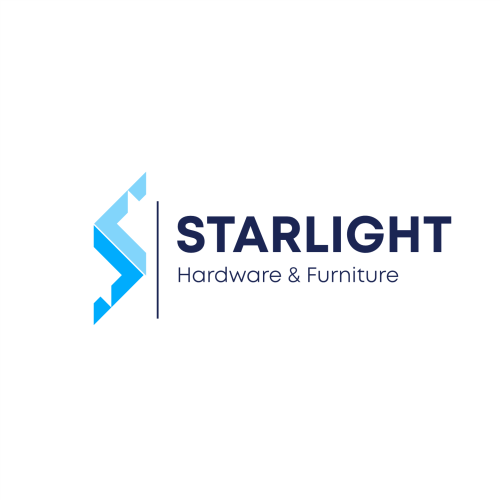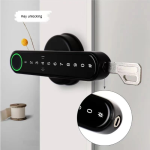Ever locked out at midnight because your smart lock died?
You’re not the only one.
More than 20 percent of smart locks fail in under a year.
Choosing the right factory is how you get that smooth metal faceplate (the part you actually touch) and the reassuring click that never lets you down.
We’ve been in the smart-lock game for two decades. Um, time flies when you’re locking doors. But that experience means we know what makes a lock last.
All our factories are CE certified. They put every lock through tough quality checks.
Ready for five factory deals you’ll love? Each includes firmware tweaks (little software fixes that keep your lock secure) and custom logo options so your lock feels uniquely yours.
We handpicked these partners for top-notch craftsmanship, fair pricing, and real-world reliability tests. Back to our smart-lock quest.
Read on to pick the perfect production partner.
Essential Criteria for Choosing a Smart Door Lock Factory
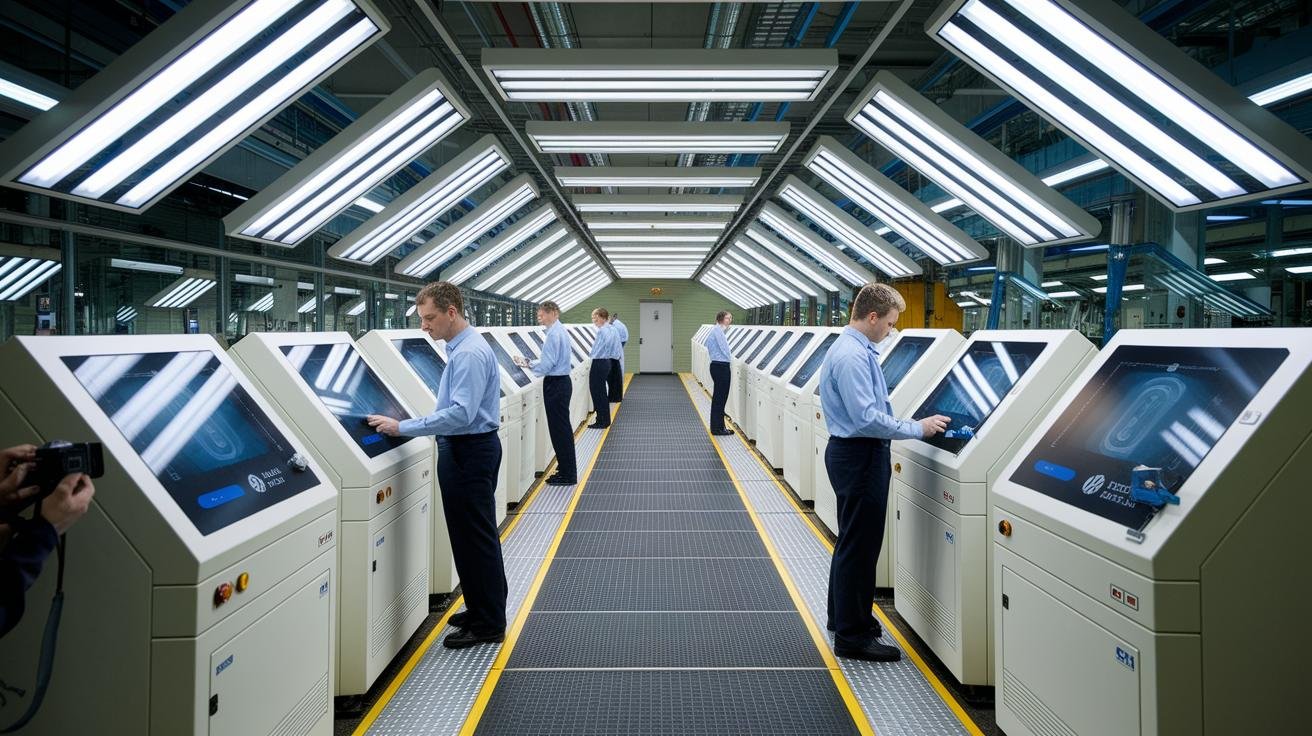
When you pick a smart door lock factory, you want steady, reliable output. That starts with following global standards. CE marking (EU safety rules), FCC approval (US radio rules), and RoHS compliance (no harmful chemicals) show a factory cares about safety and the planet. Plus, SGS test reports on 304 stainless steel (a strong, rust-resistant alloy) mean your locks will survive salt spray and daily wear. A smooth metal faceplate and a reassuring click should last for years, no sudden recalls or supply hold-ups.
And when a factory locks down its process, sharing production logs, test steps, and material checks, you get consistent yields and fewer defects. It’s like having a clear roadmap: you know exactly what goes in and how it’s tested. Traceable quality control cuts down on warranty claims and makes customs clearance a breeze.
Here are the key things to look for:
- OEM vs. ODM services so you can choose ready-made designs or start from scratch
- Assembly line capacity for high-volume runs without delays
- Minimum order quantities and pricing tiers to match your budget
- Factory certifications: CE marking, FCC approval, RoHS compliance, plus SGS 304 steel reports
- Multi-stage testing covering circuit boards, salt spray, and temperature cycles
- Custom options: finishes, firmware tweaks, and your own logo
- Packaging services: plain or custom-branded boxes
- Supply chain support with global shipping networks and logistics help
Checking these details side by side helps your team compare quotes from different factories. You’ll see who can meet your volume, timing, and budget goals while keeping quality top-notch. Solid planning now means fewer headaches down the road.
In-Depth Smart Door Lock Manufacturing Processes
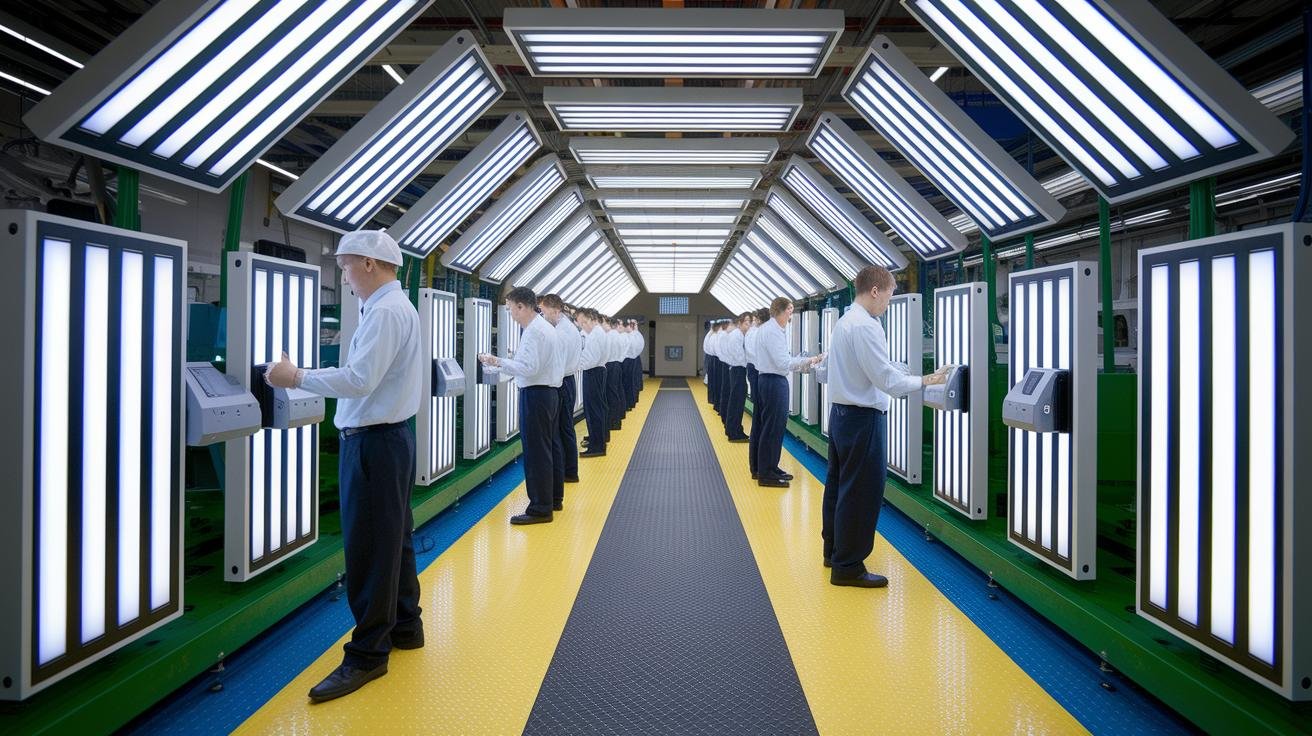
Every smart lock we ship starts with a solid production flow. We watch each step closely, keeping lead times short and quality high. Um, you’ll feel the reassuring click and see the soft LED glow batch after batch.
-
Raw material inspection
We inspect every part that arrives. Each 304 stainless steel sheet (a rust-resistant metal backed by SGS test reports) and every ABS plastic pellet (a tough plastic grain) waits until it meets our size and purity specs. Only then do we move on. -
Molding or stamping
High-tech presses shape the plastic housing. It’s like a cookie cutter forming each keypad module in seconds. Then those hot pieces cool into firm, ready-to-fit parts. -
Precision cutting
CNC machines (computer-controlled mills) carve the stainless steel plates to exact measurements. They cut grooves and mounting holes so the faceplate lines up perfectly every time. -
PCB assembly
On the circuit board line, robots place tiny components with pinpoint accuracy. Soldering, inspection, and testing flow in one smooth pass. It’s like an assembly dance to power your door lock circuit board assembly (the brain behind your lock). -
Welding
Skilled engineers weld metal parts into a sturdy case. You can almost hear the machine humming as each seam fuses under strict heat control. Solid. -
Component assembly
Our team trims rough edges, buffs surfaces, and snaps the modules together. Fingerprint modules (readers that check your unique fingertip pattern) and RFID lock modules click into place like puzzle pieces. -
Packaging
Finished locks slide into plain or custom-branded boxes. Protective foam cradles each unit, ready for pallets or store shelves.
Throughout production, we log checkpoints, take random samples, and keep detailed records. No surprises. Just reliable security at your doorstep.
Smart Door Lock Quality Control Standards and Testing Procedures
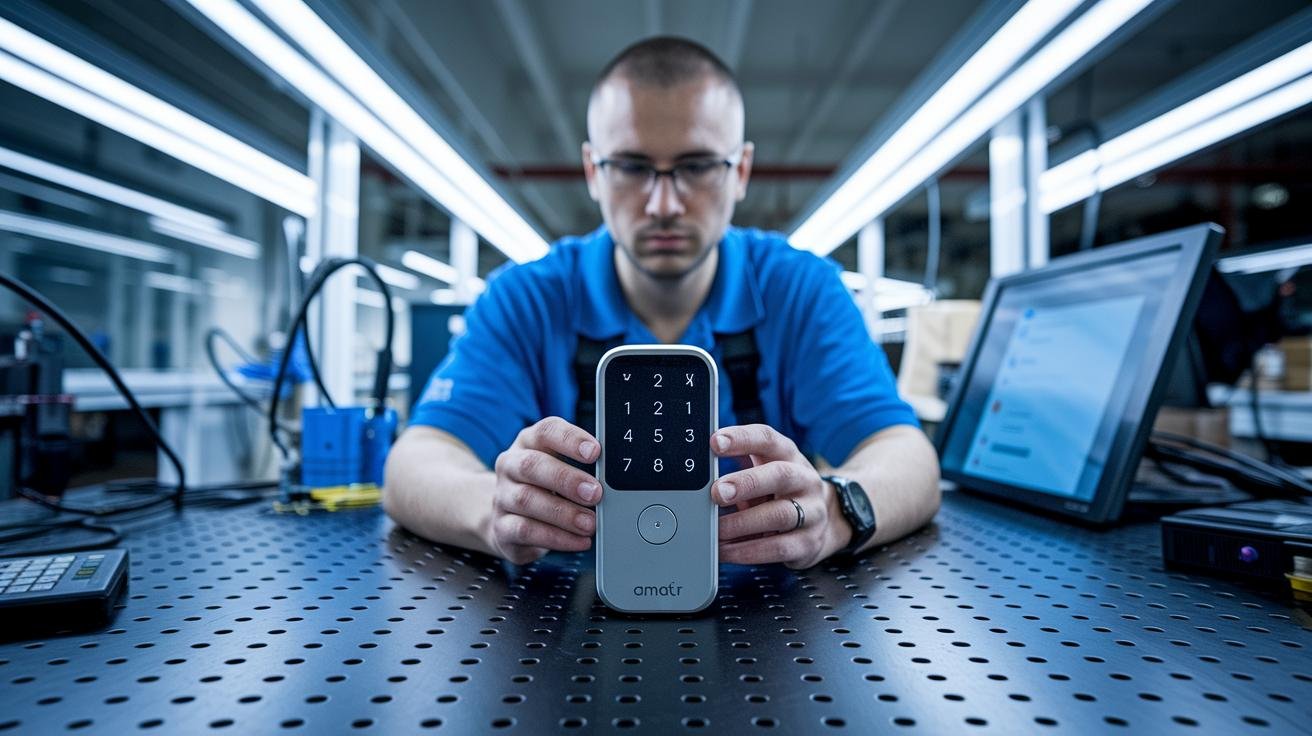
Smart lock quality control isn't something we just tick off. Our business customers count on each batch to work the same way. Picture a hotel manager fitting 1,000 locks and then some stop working on day two. Yikes. Nobody wants that supply chain headache.
That's why we run tough tests that keep returns low and your reputation rock solid.
Electronic Module Testing
When a circuit board arrives, we give it a full check, every solder joint, every chip. Then we sample 15 percent of boards during assembly to catch any drift in real time. We check another 15 percent of finished boards before they leave. We test the fingerprint module integration (a reader that checks your unique fingertip pattern) and run PIN-code speed tests (timing how fast you punch in your code). Fast access. Every time.
Environmental Durability Tests
Locks live everywhere, from humid seaside resorts to freezing warehouses. So we spray them with neutral salt mist for 200 hours. This salt spray corrosion test shows if steel parts will rust. Then we cycle them between 140 °F and 14 °F in ovens and freezers, mimicking heat waves and arctic blasts. Next, we give them impact tests, like a heavy knock or door slam. If a lock bends or jams, it heads right back for a design tweak.
Security Performance Tests
When it comes to security, we get serious. Our silicone analog finger test (a soft, rubbery probe that mimics a thief’s finger) checks for sneaky gaps. Then we lock and unlock the mechanism hundreds of times to prove it won’t stick or skip. Finally, we pull random samples and run one more reliability test before we pack them up.
These multi-step checks slash warranty claims and keep your bulk orders flowing on time. When your project depends on thousands of units, consistent performance and fewer defects matter most!
Key Certifications and Compliance for Smart Door Lock Factories
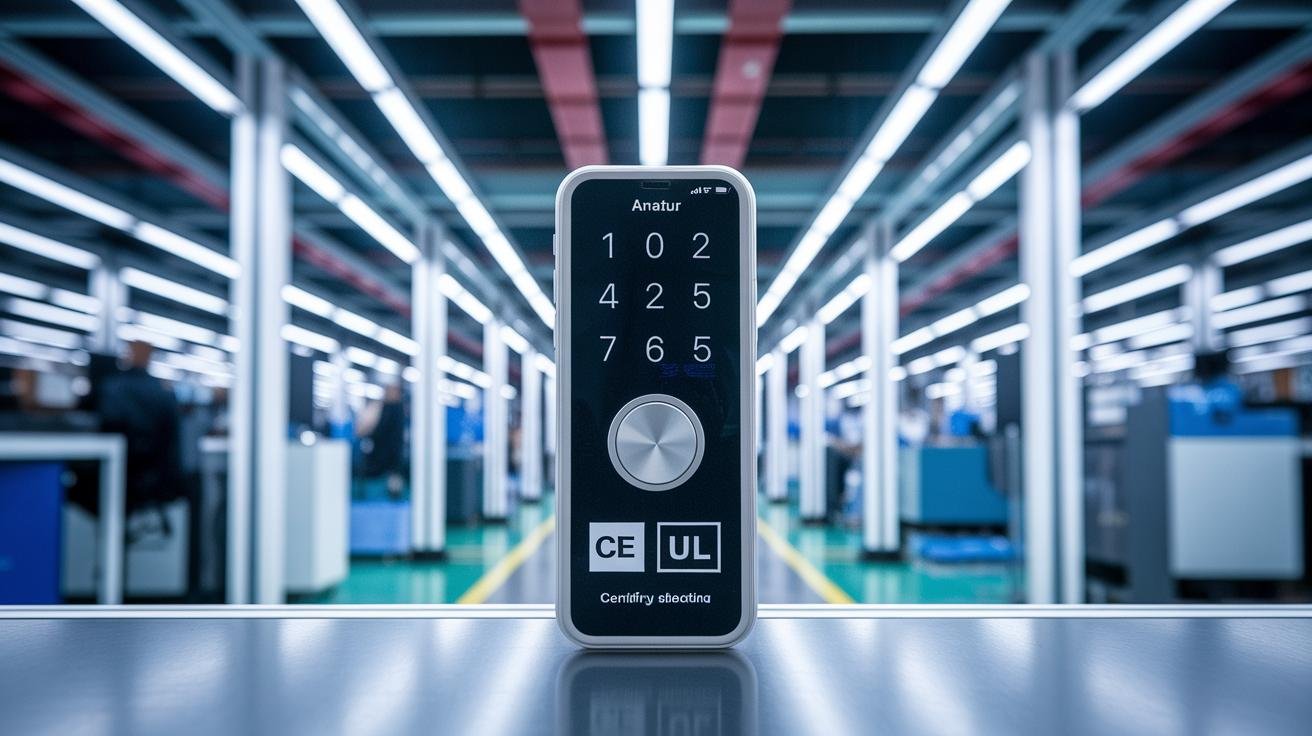
Factories that build smart door locks must follow strict global rules for safety, performance, and the environment.
We check certificates early to dodge customs delays and prove our locks meet all the legal standards in every major market.
Want to know a secret? Having these certificates is like giving your lock a VIP pass through customs.
Factory certifications and compliance
- SGS test reports for 304 stainless steel (ensures the metal faceplate resists rust under a neutral salt spray test)
- CE marking for EU safety and electromagnetic compatibility (confirms our lock won’t interfere with other devices and meets European safety rules)
- FCC approval for US radio devices (greenlights our wireless signals in America)
- RoHS certification (limits lead, mercury, and other harmful substances)
- UL safety standards for locks (verifies resistance to electric shock and fire)
- ISO 9001 quality management system (means we follow clear steps and keep improving)
These certificates speed up import clearance, smooth out market approvals, and give you peace of mind about quality and safety.
UL’s electric shock and fire tests add an extra layer of protection.
And ISO 9001 shows we stick to solid processes and never stop improving.
5 smart door lock factory Deals You’ll Love
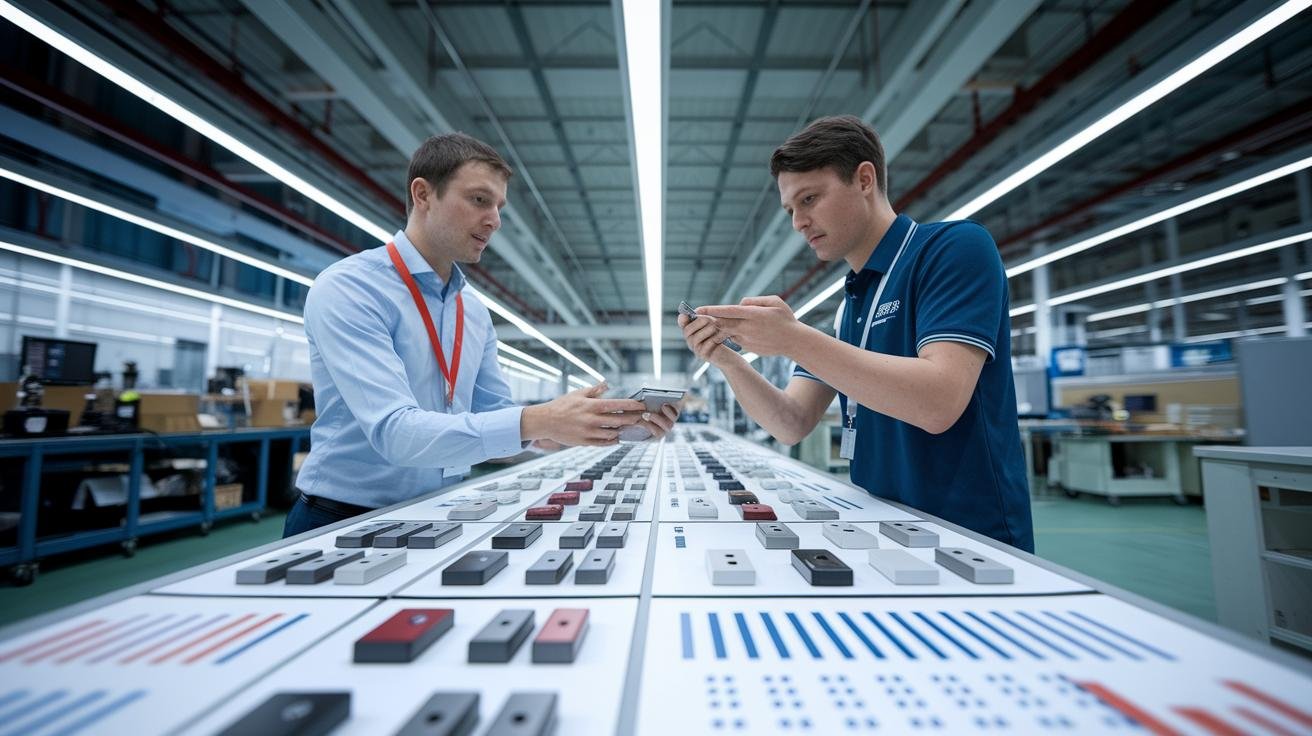
So, let’s talk MOQ (minimum order quantity). It’s the smallest number of smart door locks (electronic locks you control with a code, app, or fingerprint) a factory will make. When you know your MOQ and price tiers, you can plan your budget with confidence. No wild cost surprises.
A clear smart lock price quote breaks down your cost per unit and any extra fees. You see exactly what each lock will cost before you commit. It’s like getting an itemized receipt for your order. And that peace of mind keeps everyone smiling.
Factories often juggle small-batch runs and big orders right on the same floor. You could snag a standard model in two weeks, kind of like ordering a latte at your favorite café. Custom runs, with unique finishes or extra features, take about 45 to 60 days. Avent keeps MOQs low and offers friendly pricing for brand owners, wholesalers, and contractors.
| Order Type | MOQ | Lead Time | Price Range |
|---|---|---|---|
| Standard model | 50 units | 15 days | $100–$120 |
| Custom model | 200 units | 45–60 days | $110–$150 |
| White-label bulk | 500 units | 60–75 days | $105–$140 |
Scaling up? Just ask. Most plants let you tier pricing so higher volumes lower your per-unit cost. Don’t be shy about requesting separate quotes for 1,000 and 5,000 units. A quick chat with a sales rep can unlock extra savings on tooling or speed up your lock production.
5 smart door lock factory Deals You’ll Love

-
OEM service: stock locks you can brand and package right away. They come with that smooth metal faceplate and a reassuring click. Just add your logo and your design shines.
-
ODM service: fully custom smart locks built to your specs. We start from raw components and craft everything – from the housing finish to the firmware. We’re CE certified and test each lock in sand, rain, and subzero temperatures. With over 20 years of expertise, we make sure it works flawlessly.
-
Custom services: we fine-tune every detail.
- Hardware design: pick your body finish – stainless steel, matte black, or aluminum. We choose housing materials for long-term wear resistance.
- Firmware tweaks: set PIN rules (codes you enter), auto-lock timing (when it clicks shut), or add Bluetooth and Wi-Fi modules at the factory.
- Branding: get your logo engraved on the faceplate and custom packaging that wows.
- Preinstalled app settings: paired to your mobile app with your color scheme. Ready out of the box.
- Sample prototyping: test the biometric fingerprint sensor (a reader that checks your unique fingertip pattern), keypad feel, or RFID (radio frequency ID) performance before you commit.
-
In-stock distribution: white-label locks ready to ship so you hit the market fast. No waiting. No fuss.
-
Flexible MOQs (minimum order quantities) and clear lead times. Check the table below to plan your launch.
| Order Volume | Lead Time |
|---|---|
| Samples (1-10) | 2 weeks |
| Small Batch (50-200) | 4 weeks |
| Mass Production (500+) | 8 weeks |
Global Smart Door Lock Factory Locations and Supply Chain Logistics
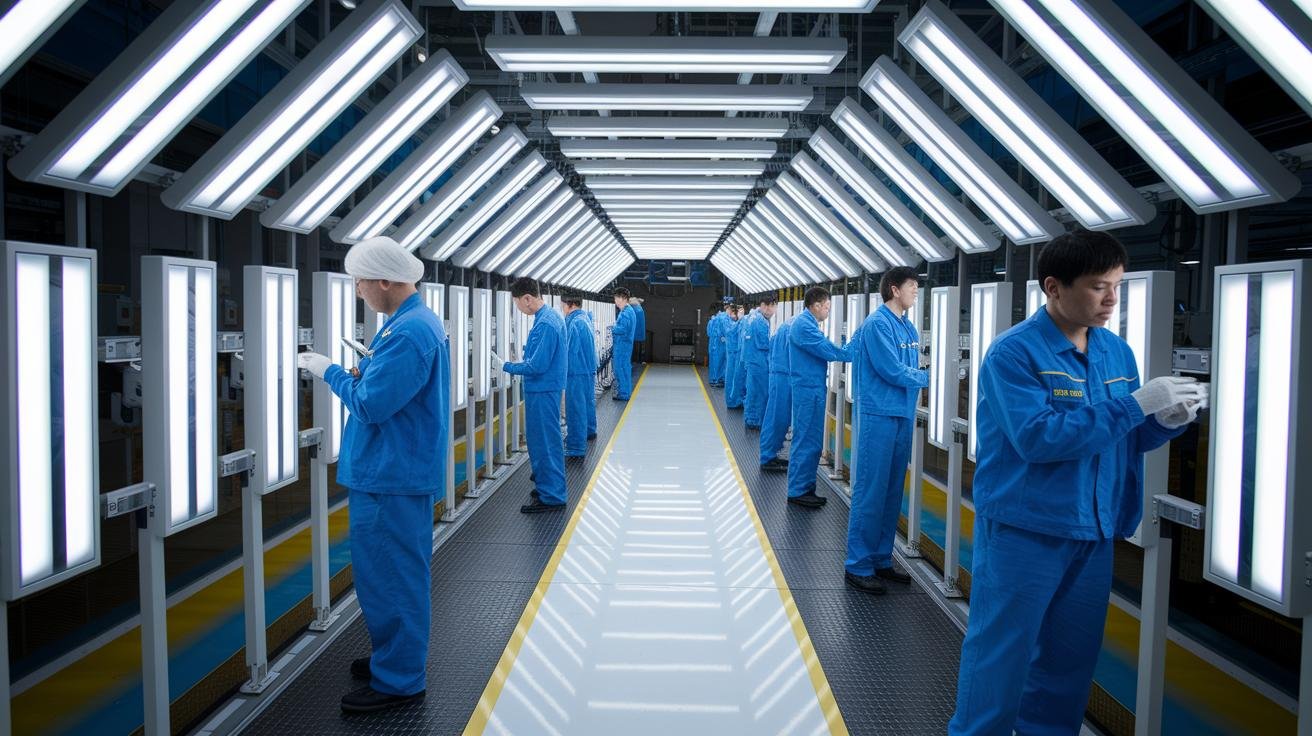
Our network of smart lock factories stretches across the globe. Each site brings its own strength, speed, precision, or fresh ideas. Together, they form a smooth supply chain that keeps your inventory topped up and your customers happy.
In China, our key OEM hub hums with high-speed assembly lines. Every day, hundreds of units roll off the line, each a fingerprint or RFID door lock with a biometric fingerprint sensor (a reader that checks your unique fingertip pattern). Competitive pricing makes bulk orders easy on your budget. We’ve spent two decades refining this process.
Over in Stuttgart, DESSMANN’s plant zeroes in on certified quality. Each lock wears the crisp stamp of ISO 9001 and CE marks. It’s proof of rigorous testing and gives you a reassuring click of reliability. They ship across Europe, Latin America, and parts of Asia. Solid.
Closer to home, our US and Canadian assembly sites cut transit times to a fraction. We source components locally and run final function checks under bright workshop lights. That means fast restocks for your American customers and fewer shipping headaches.
Then there are our emerging hubs in Vietnam, Malaysia, and Thailand. These plants shine at small-batch runs and fresh tech tweaks. Want to know a secret? Our small-batch runs have sparked some of our coolest tech features. It’s like a smart lock incubator close to electronics suppliers.
When it comes to freight, you pick the best route: sea, air, or rail. Sea freight keeps costs low. Air freight zooms your order over oceans. Rail strikes a balance between price and speed. Customs clearance can vary by port. But modern tracking systems let you follow your locks from the factory floor to your storage shelf.
Partner with a supplier who guides you through every step, with no guesswork and no surprise fees. After all, we’ve spent 20 years fine-tuning this process so your order sails smoothly on schedule.
How to Request Quotations and Arrange Factory Visits at a Smart Door Lock Factory

So you’re ready to compare smart lock factory offers. Send a clear RFQ (request for quotation) and expect a reply within 24 hours. Most factories want full specs up front, access methods, material choices, finish options, and required certifications. Having that info on hand speeds up pricing and sample approvals.
Here’s what to include in your RFQ:
- Product specs: list access modes like a biometric fingerprint sensor (a reader that checks your unique fingertip pattern), keypad, or RFID tag (radio-frequency identification). Also note housing material, finish color, and feature set.
- Packaging options: plain cartons, custom-printed boxes, foam inserts, barcode labels, and any special marking instructions.
- Certifications: CE marking, FCC approval, RoHS compliance, SGS test reports, and any market-specific safety standards.
- Sample request: state quantity needed, delivery address, and lead time. Think of prototyping tests to see how the lock fits and works.
- Video tour: ask for a live walkthrough of the assembly line, quality checks, and circuit board testing stations.
- Factory visit: plan dates after you sign an NDA (nondisclosure agreement) and place a deposit. Confirm your hotel and transport with the factory’s support team.
Want to know a secret? Factories appreciate questions about technical support services and warranty coverage. It shows you’re serious about long-term reliability. And before you book that site visit, make sure your NDA is signed and your contract is reviewed.
Solid.
Final Words
In the action, we’ve explored eight must-have criteria for choosing a smart door lock factory.
We saw why certifications, capacity and quality control matter for dependable sourcing.
And we dug into manufacturing steps, testing stages and compliance checks.
We covered MOQ, pricing tiers and OEM/ODM services shaping your procurement approach.
Now you can compare factories confidently, streamline guest entry and reduce security incidents.
A reliable smart door lock factory lays the foundation for smoother operations and happier guests.
FAQ
What are the best smart door lock factories and where can I find reviews?
The best smart door lock factories earn praise for CE certification and solid support, and you can find reviews on platforms like Alibaba, Made-in-China, and trusted B2B forums.
Where can I find a smart door lock factory in the USA?
A smart door lock factory in the USA often operates in California, Texas, and New York. Check ISO 9001-certified manufacturers with CE and FCC marks. Directories like ThomasNet and trade shows connect you with verified suppliers.
What is the typical price for a smart door lock factory to produce units?
The typical price depends on quantity, materials, and features. Standard models start around $25 to $50 per unit at an MOQ of 500. Custom designs command higher rates.
How do I access the Be-Tech lock manual?
The Be-Tech lock manual is available on the official Be-Tech website under Support. It offers step-by-step setup, troubleshooting tips, and wiring diagrams in PDF for quick reference.
What is a smart door lock with handle and deadbolt?
A smart door lock with handle and deadbolt combines a grip-style lever and a motorized deadbolt. It offers keyless entry, a tactile handle feel, and automatic deadbolt locking.
What defines a smart entry door lock?
A smart entry door lock uses electronic access methods like PIN pads, RFID cards, or biometric fingerprint sensors. It adds remote control and activity logs for peace of mind.
Can a smart lock be used on a double door?
A smart lock can work on a double door with symmetrical handles or flush bolts. You install one module on the active leaf and a matching strike on the inactive leaf to keep both secure.
